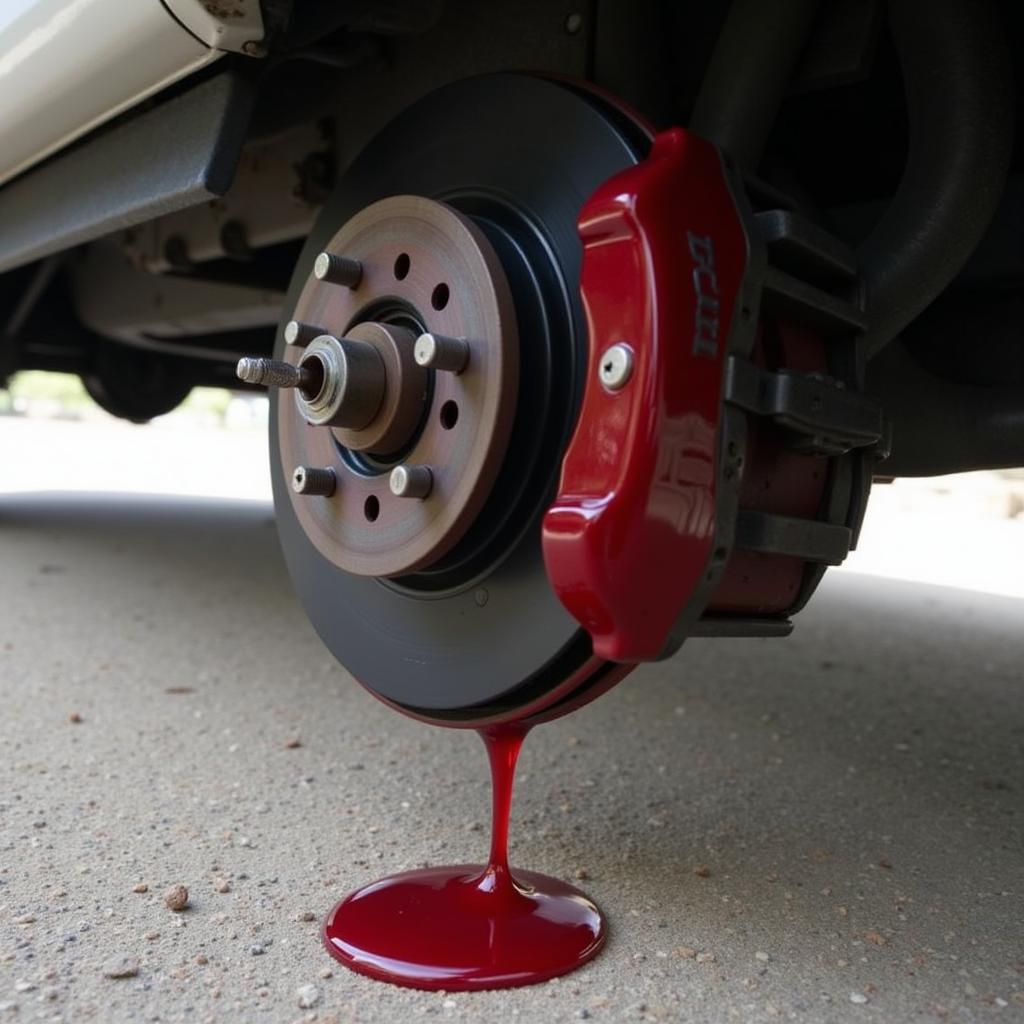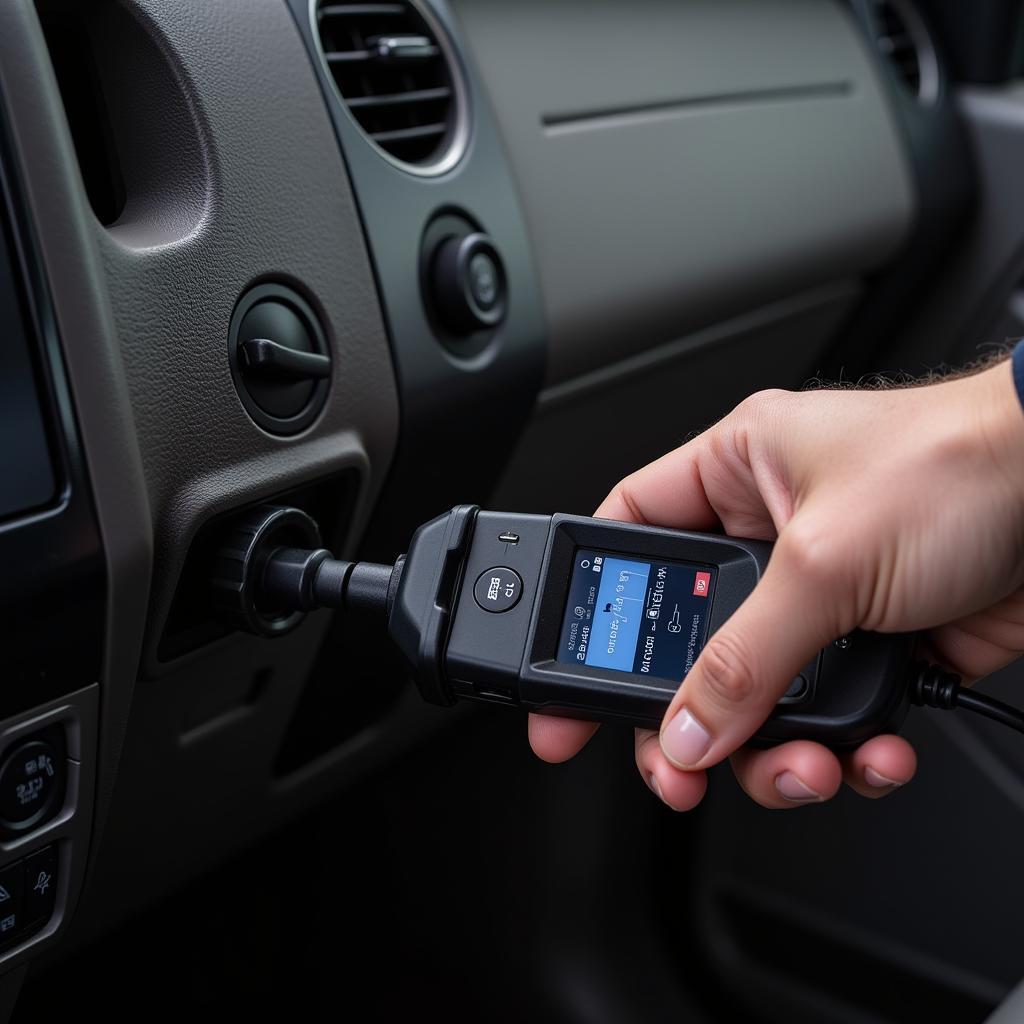A 2012 Ford Expedition illuminating both the “Check Brake System” and “AdvanceTrac” warnings on your dashboard can be alarming. However, understanding the potential causes and solutions can save you time, money, and unnecessary worry. This article will delve into the common culprits behind these warning messages and guide you through possible troubleshooting steps.
While the “Check Brake System” warning typically points to issues within the braking system itself, the “AdvanceTrac” warning indicates a problem with the vehicle’s electronic stability control system. Since these systems often work in tandem, a single fault can trigger both warnings simultaneously.
Common Culprits Behind the Warnings
Several factors can cause the “Check Brake System” and “AdvanceTrac” warnings to appear simultaneously in a 2012 Ford Expedition. Here are some of the most common culprits:
1. Faulty Wheel Speed Sensors
Wheel speed sensors are crucial for both your braking and stability control systems. They monitor the rotational speed of each wheel, providing data to the ABS and AdvanceTrac control modules. A malfunctioning sensor can disrupt this data flow, leading to inaccurate readings and triggering the warning lights.
 Faulty Wheel Speed Sensor
Faulty Wheel Speed Sensor
2. Worn Brake Pads
Worn brake pads can also trigger the “Check Brake System” warning. As brake pads wear down, the brake fluid level in the master cylinder drops. The float in the master cylinder activates a sensor when the fluid level falls below a certain point, triggering the warning light.
3. Low Brake Fluid
Aside from worn brake pads, a leak in the brake lines, calipers, or wheel cylinders can also lead to low brake fluid, activating the “Check Brake System” warning.
 Brake Fluid Leak
Brake Fluid Leak
4. Faulty Steering Angle Sensor
The steering angle sensor plays a vital role in the AdvanceTrac system. It determines the driver’s intended direction by measuring the steering wheel’s position. A faulty sensor can send incorrect information to the AdvanceTrac control module, activating the warning light and potentially affecting the stability control system’s performance.
5. Malfunctioning ABS Module
While less common, a failing ABS module can also trigger both warning lights. The ABS module receives data from the wheel speed sensors and other components to control the anti-lock braking system. A malfunctioning module can disrupt the communication between these systems, leading to the warning lights.
Troubleshooting the Warnings
If your 2012 Ford Expedition displays these warnings, consider these troubleshooting steps:
-
Check the Brake Fluid Level: Park your vehicle on a level surface and inspect the brake fluid reservoir. If the fluid level is low, add the appropriate DOT 3 brake fluid to the reservoir.
-
Inspect for Brake Fluid Leaks: Examine the brake lines, calipers, and wheel cylinders for any signs of leakage. A leak can cause the brake fluid level to drop, triggering the “Check Brake System” warning.
-
Check the Brake Pads: Inspect the thickness of your brake pads. If they are worn down to the wear indicator, replace them with new ones.
-
Scan for Diagnostic Trouble Codes: Use an OBD-II scanner to read the diagnostic trouble codes stored in your vehicle’s computer. This can help pinpoint the root cause of the warnings, whether it’s a faulty wheel speed sensor, steering angle sensor, or another component.
 OBD-II Scanner
OBD-II Scanner
Expert Insight from John Miller, ASE Certified Master Technician:
“Many car owners overlook the importance of regular brake system inspections. Addressing potential issues early on, like worn brake pads or a minor fluid leak, can prevent more significant and costly repairs down the road.”
Conclusion
Experiencing the “Check Brake System” and “AdvanceTrac” warnings simultaneously in your 2012 Ford Expedition can be concerning. However, understanding the potential causes and taking the appropriate troubleshooting steps can help you resolve the issue effectively. Remember, if you’re unsure about any of these procedures or the diagnosis, consulting a qualified mechanic is always recommended. By addressing these warning signs promptly, you ensure the safety and reliability of your vehicle.

